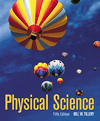The impact of ancient Aristotelian ideas on the development of
understandings of motion, elements, and matter was discussed in earlier chapters.
Historians also trace the "vitalist theory" back to Aristotle. According
to Aristotle's idea, all living organisms are composed of the four elements
(earth, air, fire, and water) and have in addition an actuating force, the life
or soul that makes the organism different from nonliving things made of the
same four elements. Plants, as well as animals, were considered to have this
actuating, or vital, force in the Aristotelian scheme of things. There were strong proponents of the vitalist theory as recent as the early
1800s. Their basic argument was that organic matter, the materials and chemical
compounds recognized as being associated with life, could not be produced in
the laboratory. Organic matter could only be produced in a living organism,
they argued, because the organism had a vital force that is not present in laboratory
chemicals. Then, in 1828, a German chemist named Fredrich Wohler decomposed
a chemical that was not organic to produce urea (N2H4CO), a known organic compound
that occurs in urine. Wohler's production of an organic compound was soon followed
by the production of other organic substances by other chemists. The vitalist
theory gradually disappeared with each new reaction, and a new field of study,
organic chemistry, emerged. This chapter is an introductory survey of the field of organic chemistry,
which is concerned with compounds and reactions of compounds that contain carbon.
You will find this an interesting, informative introduction, particularly if
you have ever wondered about synthetic materials, natural foods and food products,
or any of the thousands of carbon-based chemicals you use every day. The survey
begins with the simplest of organic compounds, those consisting of only carbon
and hydrogen atoms, compounds known as hydrocarbons. Hydrocarbons are the compounds
of crude oil, which is the source of hundreds of petroleum products (Figure
14.1). In this section you will find information about things you may have wondered
about, for example, what an octane rating is and how petroleum products differ. Most common organic compounds can be considered derivatives of the hydrocarbons,
such as alcohols, ethers, fatty acids, and esters. Some of these are the organic
compounds that give flavors to foods, and others are used to make hundreds of
commercial products, from face cream to margarine. The main groups, or classes,
of derivatives will be briefly introduced, along with some interesting examples
of each group. Some of the important organic compounds of life, including proteins,
carbohydrates, and fats, are discussed next. The chapter concludes with an introduction
to synthetic polymers, what they are, and how they are related to the fossil
fuel supply. |



 2002 McGraw-Hill Higher Education
2002 McGraw-Hill Higher Education

 2002 McGraw-Hill Higher Education
2002 McGraw-Hill Higher Education